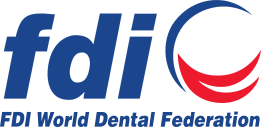Oral Cancer
September, 2015
Bangkok
Thailand
Context
Oral cancer is a major and growing global public health problem, and it remains the major cause of death from oral disease worldwide. It includes malignancy of the vermillion borders of the lips, and all surfaces of the oral cavity including the anterior two-thirds of the tongue. These cancers occur predominantly as squamous cell carcinomas, and they are highly lethal, incapacitating and disfiguring. There were 299,051 cases of lip and oral cavity cancers in 2012 and 145,353 deaths worldwide: adding those with oro-and hypo-pharynx cancers, raising this figure to 441,000 cases per year and 241,458 deaths. These carcinomas have one of the lowest 5-year survival rates (about 50%) of all cancers. The survival rates are improving gradually in well-resourced treatment centres, but many of the cases around the world come late to treatment and fare badly.
The major risk factors of oral cancer include tobacco use in all forms, chewing areca/betel nut, over-consumption of alcohol, poor diets, and persistent infections of the upper aerodigestive tract with human papilloma virus (HPV). As this virus is the major cause of cancers of the uterine cervix and genital tracts in both men and women, oral and oropharyngeal cancers can also be sexually transmitted diseases. Prevention should be based on appropriate hygiene, control of major risk factors and the widely available HPV vaccines. Oral, potentially malignant lesions such as erythroleukoplakia and erythroplakia have similar causes and may increase the risk of oral cancer substantially.
Scope
This policy statement provides essential information about the global prevalence of oral cancer, its causes and the crucial role of oral healthcare professionals in tackling this serious lifethreatening disease.
Definitions
This policy statement covers all malignancies arising in the soft tissues of the lips, tongue and elsewhere in the oral mucous membranes. Reference is made to neoplasms arising in the tonsils and elsewhere in the oropharynx. The nasopharynx and hypopharynx are excluded, as these sites are not easily examined in a dental context. Subsites differ by major risk factor and vary in disease progression.
Principles
The prevention of oral cancer, its early detection and care are crucial for the reduction of mortality and morbidity of this serious oral disease. As oral cancer shares common risk factors like tobacco smoking with many noncommunicable diseases, close collaboration and joint work with other health professionals/agencies are therefore essential to effective primary and secondary prevention and provision of patient care. This policy statement contributes to FDI’s aims of including ‘oral health in all policies’ and ‘improving access to oral healthcare’.
Policy
Oral healthcare professionals play a key role in the prevention, early detection and treatment of oral cancer. Thorough and routine oral examination should be regularly and carefully undertaken by every dentist for all their patients, as it is an effective method for assessment and diagnosis of oral cancer, especially in high-risk individuals. Opportunistic early detection of oral cancer with appropriate record keeping is therefore an integral part of dental and medical practice. Brush cytology may serve as an adjunct to assess an early stage of oral cancer. Currently, scalpel biopsy remains the best diagnostic approach for oral cancer.
FDI recognizes that oral healthcare professionals play important roles in tackling oral cancer through the following actions:
- Educating patients and the public about major risk factors and high-risk behaviours.
- Encouraging all patients to minimize exposure to cancer-causing risk factors.
- Offering specific tobacco-cessation counselling, and advice on moderate alcohol ingestion and good nutrition, as a part of routine oral health education and practice.
- Early detection of oral cancers by thorough examination of hard and soft tissues intraorally and extraorally for all patients.
- Remaining current with reliable and valid diagnostic technologies.
- Establishing referral protocols for patients with suspicious lesions or those diagnosed with oral cancer, and effective inter-disciplinary management strategies including an awareness of psycho-social support networks.
FDI recommends:
- National health policies should be developed for oral cancer prevention strategies, through integration with wider health literacy and messages in interdisciplinary education programmes.
- Specific training should be provided for early recognition, appropriate assessment and intime referral of patients for definitive diagnosis and effective treatment of oral cancer, as well as post-treatment patient management.
- National health policies regarding HPV vaccination recommendations should be informed by trends in the increasing incidence of HPV-related oropharyngeal cancer.
References
- Centers for Disease Control and Prevention. HPV Vaccination. Available from: http://www.cdc.gov/vaccines/vpdvac/hpv/. Accessed 1 September 2015.
- Ferlay J et al. Cancer Incidence and Mortality Worldwide: IARC CancerBase No. 11. Lyon, France: International Agency for Research on Cancer; 2013. Available from: http://globocan.iarc.fr/old/summary_table_site_prev.asp?selection. Accessed 29 March 2015.
- Johnson NW, Amarasinghe AAHK, Gupta B, Ariyawardana A. Epidemiology of Oral Cancer. Volume 1, Chapter 5. In Oral Cancer: a Comprehensive Approach Principles | Prevention | Treatment | Rehabilitation. Editor In Chief: Moni Abraham Kuriakose, Roswell Park Cancer Institute, Buffalo, New York. In press 2015.
- Johnson NW et al. Global oral health inequalities in incidence and outcomes for oral cancer: causes and solutions. Adv Dent Res. 2011 May;23(2):237-46.
- Poh C et al. Squamous cell carcinoma and precursor lesions: Diagnosis and screening in a technical era. Periodontol 2000, 2011, 57(1): 73–88.
- Sankaranarayanan R, Amarasinghe H, Ramadas K, Johnson N, Subramanian S. Prevention, Early Detection, and Treatment of Oral Cancer. Available from: http://www.dcp-3.org/node/1138. Accessed 29 March 2015.
- Shepherd S, Glenny A. Screening programmes for the early detection and prevention of oral cancer. Cochrane, 2013. Available from: http://www.cochrane.org/CD004150/ORAL_screening-programmes-for-the-earlydetection-and-prevention-of-oral-cancer. Accessed 29 March 2015.
